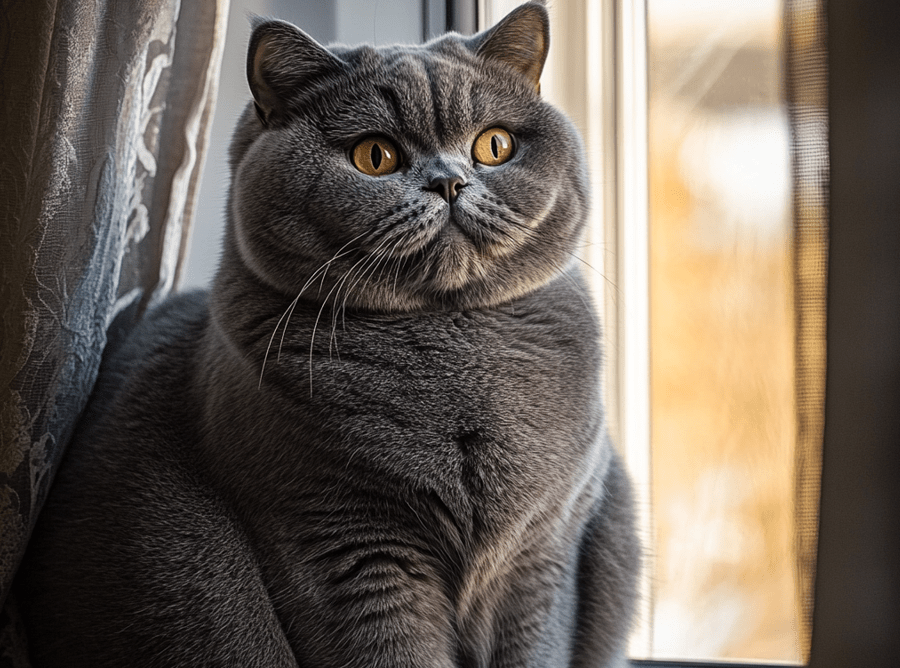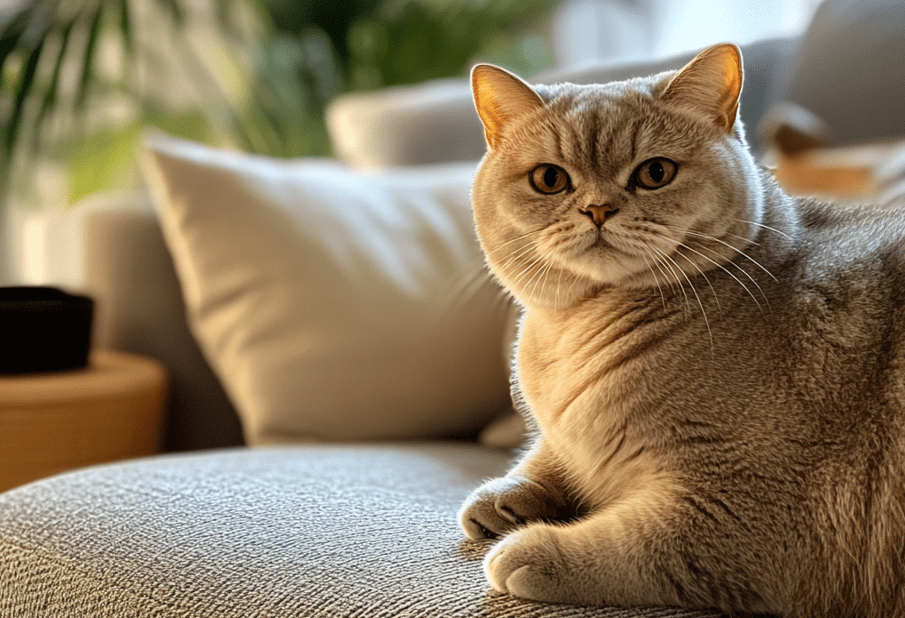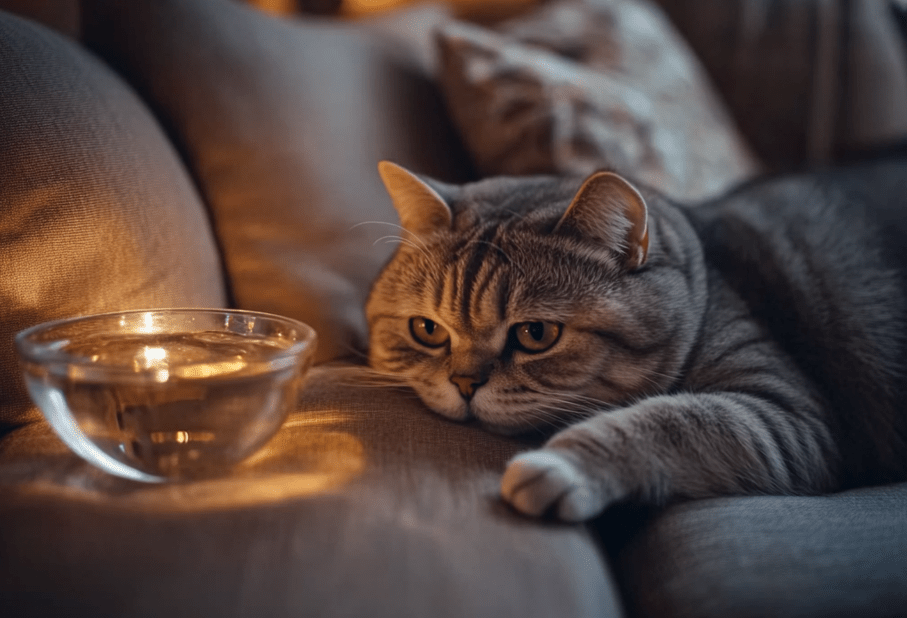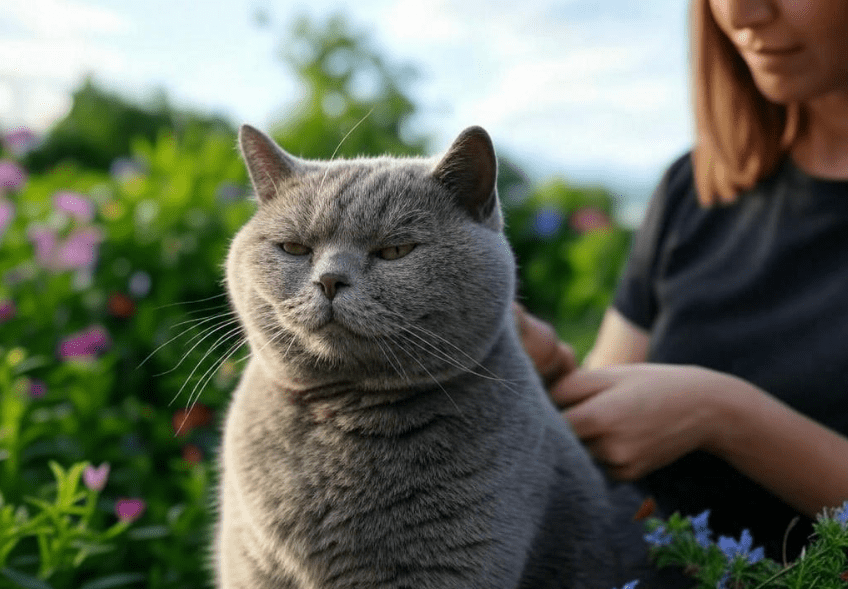
British Shorthairs are cherished for their plush, dense coats and charming personalities, but grooming them properly is essential to keep them healthy and comfortable. Unfortunately, many owners make grooming mistakes British Shorthair that can lead to skin issues, discomfort, or stress for their feline companions. This comprehensive guide explores the most common grooming errors, why they happen, and how to avoid them, ensuring your British Shorthair’s coat remains vibrant and their grooming sessions are stress-free.
Whether you’re a new or seasoned British Shorthair owner, understanding these pitfalls will help you provide the best care for your cat. From choosing the wrong tools to neglecting key grooming practices, we’ll cover everything you need to know to keep your cat’s coat in top condition. Let’s dive into the grooming mistakes to avoid and how to groom your British Shorthair like a pro.
Why Proper Grooming Matters for British Shorthairs
British Shorthairs have a unique double-layered coat that’s thick, plush, and prone to shedding, especially during seasonal changes. Proper grooming not only keeps their coat healthy but also prevents matting, reduces shedding, and promotes skin health. However, grooming mistakes British Shorthair owners make can undermine these benefits, leading to discomfort or even health issues for their cats.
By avoiding common errors and adopting best practices, you can ensure grooming is a positive experience that strengthens your bond with your British Shorthair. Below, we’ll explore the top grooming mistakes and provide actionable solutions to help you groom effectively.
Common Grooming Mistakes British Shorthair Owners Make

1. Using the Wrong Grooming Tools
One of the most frequent grooming mistakes British Shorthair owners make is using tools that aren’t suited for their cat’s dense coat. For example, using a brush designed for long-haired cats or human hairbrushes can be ineffective or even harmful.
Why It’s a Problem
Ineffective Fur Removal: Tools not designed for British Shorthairs may fail to remove loose fur from the undercoat, leading to matting or excessive shedding.
Skin Irritation: Harsh or inappropriate brushes can scratch or irritate your cat’s sensitive skin.
Stress: Uncomfortable tools can make grooming sessions stressful, causing your cat to resist future grooming.
How to Avoid It
Use a slicker brush with fine, short bristles to gently remove loose fur and prevent matting.
Invest in a deshedding tool like the FURminator for occasional deep grooming, but use it sparingly to avoid over-grooming.
Opt for grooming gloves for cats that dislike brushes, as they mimic petting while collecting loose fur.
Choose a dual-sided comb with wide and narrow teeth for detangling and smoothing the coat.
By selecting cat-specific, high-quality tools, you’ll make grooming more effective and comfortable for your British Shorthair.
2. Over-Grooming or Under-Grooming
Finding the right grooming frequency is critical, but many owners either over-groom or under-groom their British Shorthairs, both of which can cause problems.
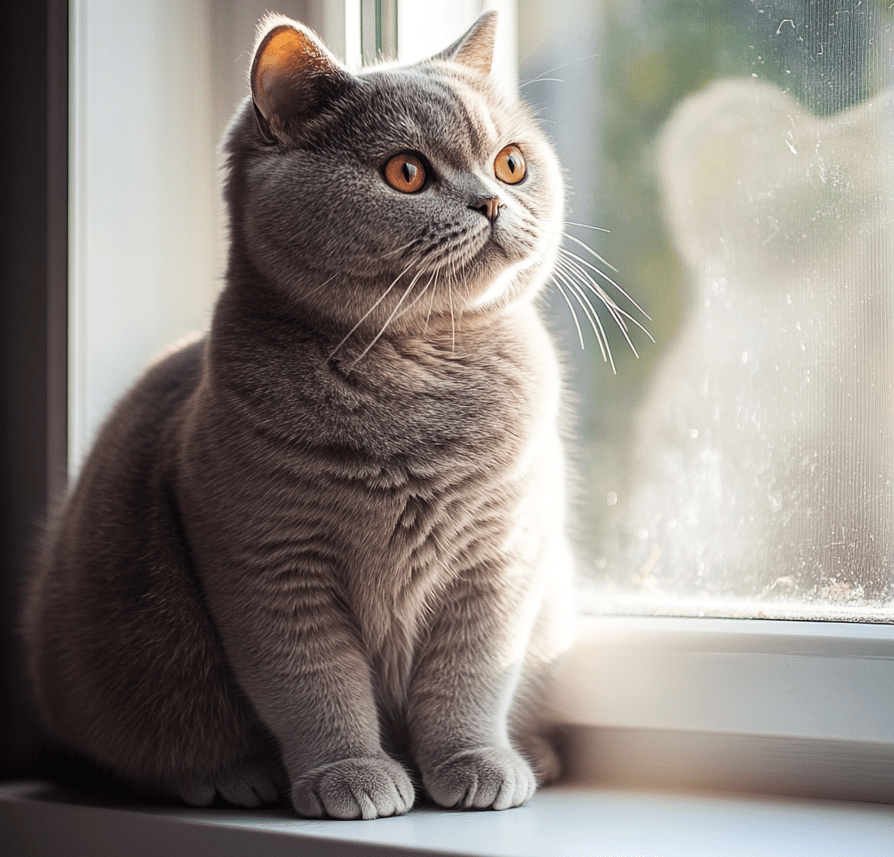
Why It’s a Problem
Over-Grooming: Excessive brushing or deshedding can irritate your cat’s skin, remove healthy oils, or damage the coat, leading to dryness or bald patches.
Under-Grooming: Infrequent grooming allows loose fur to accumulate, increasing the risk of matting, hairballs, and skin issues.
How to Avoid It
Groom Regularly: Brush your British Shorthair 2-3 times per week during shedding season (spring and fall) and once a week during other times.
Monitor Coat Condition: Check for signs of matting or excessive shedding to adjust grooming frequency as needed.
Limit Deshedding Tools: Use deshedding tools no more than once or twice a week to avoid over-grooming.
Keep Sessions Short: Aim for 5-10 minute grooming sessions to prevent stress and skin irritation.
Balancing grooming frequency ensures your British Shorthair’s coat stays healthy without causing discomfort.
3. Ignoring Matted Fur
Matted fur is a common issue for British Shorthairs due to their dense coats, but many owners overlook or mishandle mats, making this one of the top grooming mistakes British Shorthair owners should avoid.
Why It’s a Problem
Discomfort: Mats pull on the skin, causing pain or irritation for your cat.
Skin Issues: Mats can trap moisture and debris, leading to skin infections or hot spots.
Worsening Condition: Ignoring mats allows them to grow larger, making them harder to remove.
How to Avoid It
Check Regularly: Inspect your cat’s coat weekly, focusing on areas prone to matting, such as the belly, behind the ears, and under the legs.
Use a Comb: Gently work through small mats with a wide-tooth comb, starting at the edges and moving inward.
Avoid Cutting Mats: Never use scissors to cut mats, as you risk injuring your cat’s skin. Use clippers or seek professional help for severe matting.
Prevent Mats: Regular brushing and a healthy diet rich in omega fatty acids can reduce the likelihood of matting.
Addressing mats promptly keeps your British Shorthair comfortable and prevents complications.
4. Using Human or Inappropriate Products
Some owners make the mistake of using human shampoos, conditioners, or grooming products on their British Shorthairs, which can harm their skin and coat.
Why It’s a Problem
pH Imbalance: Human products have a different pH level than cat-specific products, which can disrupt your cat’s skin barrier and cause dryness or irritation.
Toxic Ingredients: Some human products contain ingredients like essential oils or fragrances that are toxic to cats.
Coat Damage: Inappropriate products can strip natural oils, leading to a dull or brittle coat.
How to Avoid It
1.Use pet-safe shampoos formulated for cats, ideally with moisturizing ingredients like oatmeal or aloe vera.
2.Avoid essential oils or heavily scented products, as they can be harmful to your British Shorthair.
3.Limit baths to once every 4-6 weeks to prevent over-washing, which can dry out the skin.
4.Use pet-safe wipes for spot cleaning between baths to remove dirt or dander.
Always choose products designed for feline skin and coat health to keep your British Shorthair safe and comfortable.
5. Forcing Grooming Sessions
Forcing a resistant British Shorthair to endure grooming is a common mistake that can lead to stress and negative associations with grooming.
Why It’s a Problem
Stress and Anxiety: Forcing grooming can make your cat fearful, leading to aggression or avoidance in future sessions.
Incomplete Grooming: A stressed cat may not allow thorough grooming, leaving fur or mats unaddressed.
Weakened Bond: Negative grooming experiences can strain your relationship with your cat.
How to Avoid It
Introduce Grooming Gradually: Start with short, gentle sessions and use treats or praise to create positive associations.
Watch for Stress Signals: Stop grooming if your cat shows signs of stress, such as hissing, swatting, or flattened ears.
Use Grooming Gloves: For cats that dislike brushes, grooming gloves can make the experience feel like petting.
Choose the Right Time: Groom when your cat is relaxed, such as after a meal or nap.
By making grooming a positive experience, you’ll help your British Shorthair feel comfortable and cooperative.
6. Neglecting Dental and Nail Care
Many owners focus solely on coat grooming and overlook dental and nail care, which are essential components of a complete grooming routine.
Why It’s a Problem
Dental Issues: Plaque buildup can lead to gingivitis or periodontal disease, affecting your cat’s overall health.
Overgrown Nails: Long nails can cause discomfort, affect mobility, or lead to scratching injuries.
Missed Health Indicators: Regular dental and nail checks can reveal early signs of health issues.
How to Avoid It
Brush Teeth Regularly: Use a cat-specific toothbrush and toothpaste to brush your British Shorthair’s teeth 2-3 times per week.
Trim Nails: Clip nails every 2-3 weeks using pet-safe nail clippers, taking care to avoid the quick (the pink area inside the nail).
Check for Issues: Inspect your cat’s mouth and paws during grooming for signs of redness, swelling, or odor that may indicate problems.
Offer Dental Treats: Dental treats or toys can help reduce plaque buildup between brushings.
Incorporating dental and nail care into your grooming routine ensures your British Shorthair’s overall health and comfort.
7. Bathing Too Frequently
While occasional baths can help manage shedding, bathing your British Shorthair too often is a mistake that can harm their skin and coat.
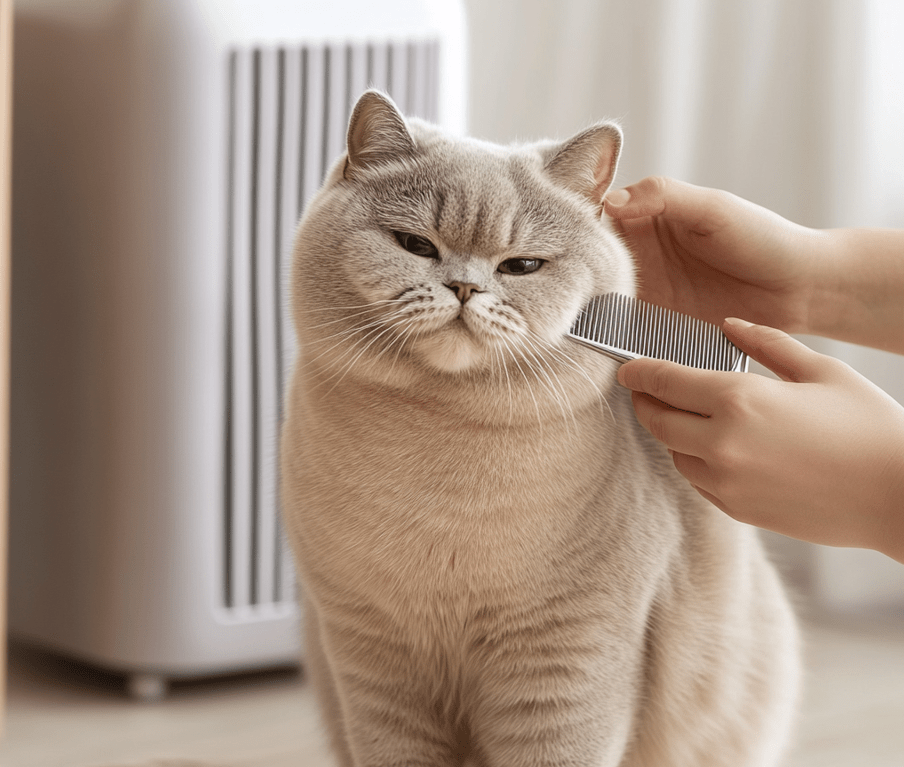
Why It’s a Problem
Dry Skin and Coat: Frequent bathing strips natural oils, leading to dryness, flaking, or a dull coat.
Stress: Many cats dislike baths, and frequent bathing can cause unnecessary stress.
Increased Shedding: Dry skin can lead to excessive shedding, counteracting the benefits of bathing.
How to Avoid It
1.Limit baths to once every 4-6 weeks unless your cat is visibly dirty or has a skin condition requiring more frequent washing.
2.Use a moisturizing cat shampoo to preserve natural oils and prevent dryness.
3.Spot clean with pet-safe wipes or a damp cloth for minor dirt or dander between baths.
4.Ensure your cat is completely dry after bathing to prevent chills or skin issues.
By bathing sparingly and using appropriate products, you’ll maintain your British Shorthair’s coat health without causing harm.
8. Failing to Address Shedding Season
Shedding season (spring and fall) requires extra attention, but some owners fail to adjust their grooming routine, leading to excessive fur buildup.
Why It’s a Problem
Fur Buildup: Increased shedding can lead to hairballs, matting, or fur accumulation in your home.
Discomfort: Loose fur trapped in the coat can cause irritation or discomfort for your cat.
Missed Bonding Opportunity: Regular grooming during shedding season strengthens your bond and keeps your cat comfortable.
How to Avoid It
1.Increase grooming to 2-3 times per week during shedding season to remove loose fur effectively.
2.Use a deshedding tool sparingly to target the undercoat and reduce shedding.
3.Vacuum your home regularly and use lint rollers to manage fur buildup.
4.Feed a diet rich in omega-3 and omega-6 fatty acids to support coat health and minimize excessive shedding.
Proactively managing shedding season keeps your British Shorthair’s coat healthy and your home cleaner.
Additional Tips for Effective British Shorthair Grooming
To complement your efforts in avoiding grooming mistakes British Shorthair, here are additional tips to enhance your grooming routine:
1. Feed a High-Quality Diet
A balanced diet with essential nutrients like omega fatty acids, biotin, and zinc promotes a healthy coat and reduces shedding. Consult your vet for recommendations on cat food formulated for skin and coat health.
2. Monitor for Skin Issues
Regularly check your cat’s skin for redness, flaking, or bald patches during grooming. Early detection of skin issues allows for prompt veterinary care.
3. Create a Calm Grooming Environment
Groom in a quiet, comfortable space to keep your British Shorthair relaxed. Use a non-slip mat or towel to make the grooming surface secure.
4. Schedule Regular Vet Checkups
Annual vet visits can identify underlying health issues, such as allergies or hormonal imbalances, that may affect your cat’s coat or grooming needs.
5. Use Positive Reinforcement
Reward your British Shorthair with treats, praise, or playtime after grooming to build trust and make future sessions easier.
These tips will help you create a grooming routine that’s effective, stress-free, and beneficial for your British Shorthair.
When to Seek Professional Help
While most grooming can be done at home, some situations require professional assistance. Contact a veterinarian or professional groomer if you notice:
Severe Matting: Mats that are too large or close to the skin to remove safely at home.
Skin Abnormalities: Persistent redness, sores, or bald patches that may indicate allergies, infections, or parasites.
Behavioral Issues: Aggression or extreme stress during grooming that prevents effective care.
Dental or Nail Problems: Signs of dental disease or overgrown nails that require professional attention.
A professional can provide specialized care and guidance to address complex grooming or health issues, ensuring your British Shorthair remains healthy and comfortable.
Conclusion

Grooming your British Shorthair is a vital part of their care, but avoiding grooming mistakes British Shorthair owners commonly make is key to keeping your cat healthy, comfortable, and happy. By using the right tools, grooming at the appropriate frequency, and addressing all aspects of grooming—from coat care to dental and nail maintenance—you can ensure your British Shorthair thrives.
This comprehensive guide has equipped you with the knowledge to avoid common pitfalls and implement best practices for grooming your British Shorthair. Start refining your grooming routine today, and enjoy a stronger bond with your feline friend and a healthier, more beautiful coat for years to come.

